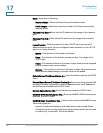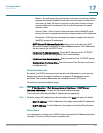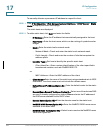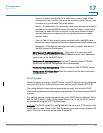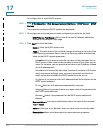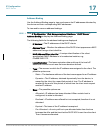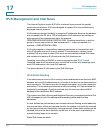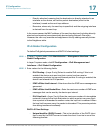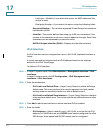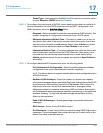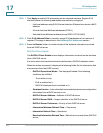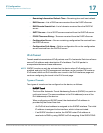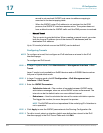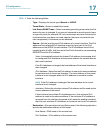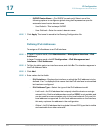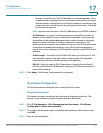
IP Configuration
IPv6 Management and Interfaces
304 Cisco Small Business 200, 300 and 500 Series Managed Switch Administration Guide (Internal Version)
17
- Link-Layer—(Default). If you select this option, the MAC address of the
device is used.
- Enterprise Number—If you select this option, enter the following fields.
• Enterprise Number—The vendors registered Private Enterprise number as
maintained by IANA.
• Identifier—The vendor-defined hex string (up to 64 hex characters). If the
number of the character is not even, a zero is added at the right. Each 2 hex
characters can be separated by a period or colon.
• DHCPv6 Unique Identifier (DUID)—Displays the identifier selected.
IPv6 Interface
An IPv6 interface can be configured on a port, LAG, VLAN, loopback interface or
tunnel.
A tunnel interface is configured with an IPv6 address based on the settings
defined in the IPv6 Tunnel page.
To define an IPv6 interface:
STEP 1 In Layer 2 system mode, click Administration > Management Interface > IPv6
Interfaces.
In Layer 3 system mode, click IP Configuration > IPv6 Management and
Interfaces > IPv6 Interfaces.
STEP 2 Enter the parameters.
• IPv6 Link Local Default Zone—(Layer 3 only) Select to enable defining a
default zone. This is an interface to be used to egress a link-local packet
arriving without a specified interface or with its default zone 0.
• IPv6 Link Local Default Zone Interface— (Layer 3 only) Select an interface
to be used as a default zone. This can be a previously-defined tunnel or other
interface.
STEP 3 Click Add to add a new interface on which interface IPv6 is enabled.
STEP 4 Enter the fields:
• IPv6 Interface—Select a specific port, LAG, VLAN, or tunnel for the IPv6
address. For Sx500 devices, only ISATAP tunnel can be configured. For other
500 devices, both manual and ISATAP tunnels can be configured.



